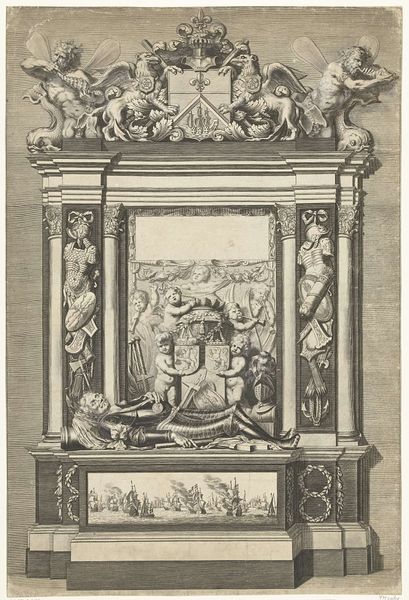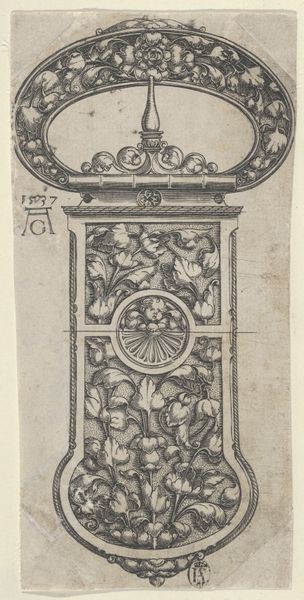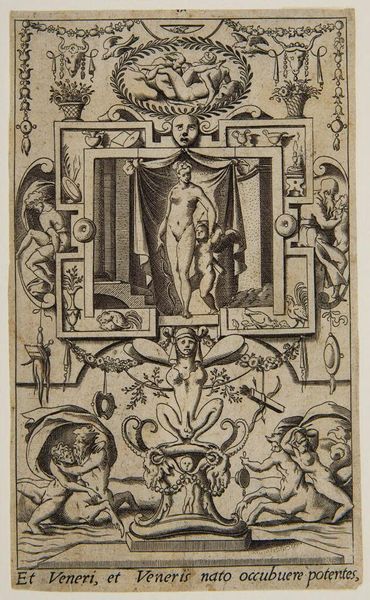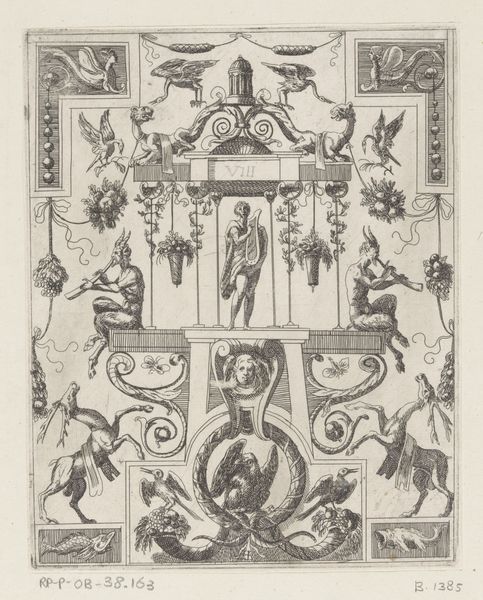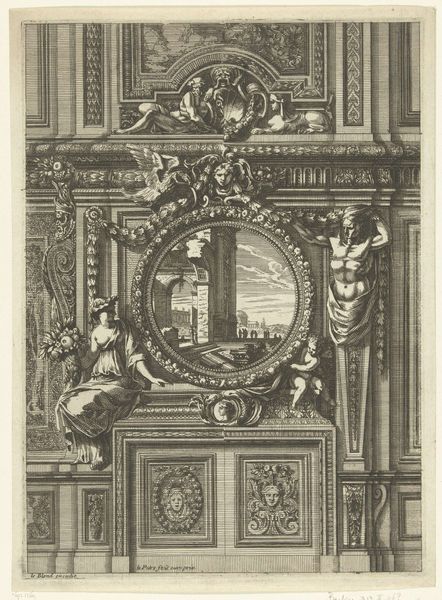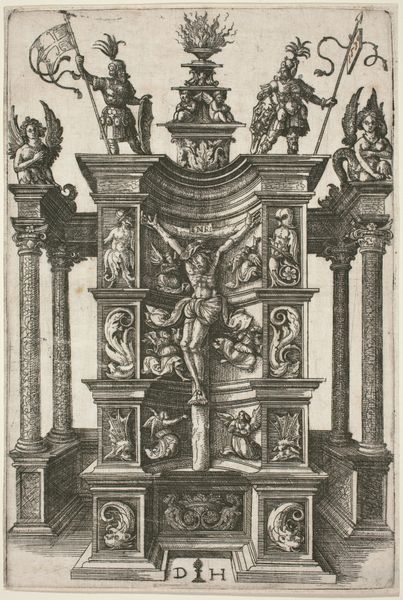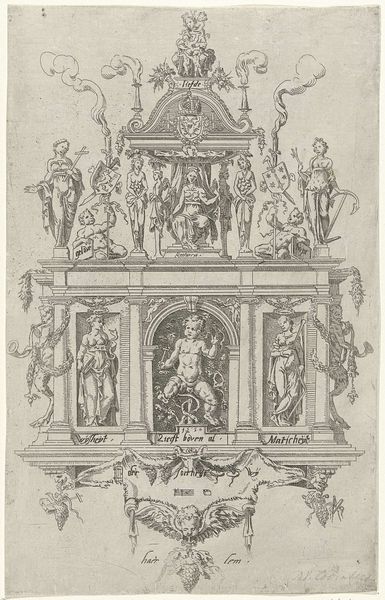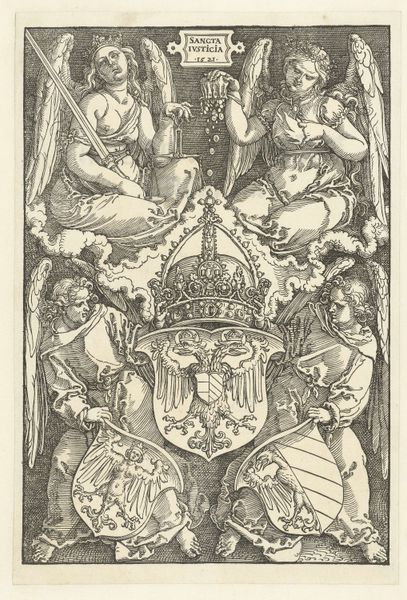
Copyright: CC0 1.0
Curator: Hans Holbein the Younger, active in the early 16th century, is believed to be the creator of this engraving, "Mark of Valentin," currently residing in the Harvard Art Museums. Editor: My first impression is one of playful complexity—the cherubs and architectural motifs create a dynamic tension. What's your read on the symbolism at play? Curator: The cherubs, for one, represent innocence but also function as active agents, almost holding the viewer in place to contemplate the scene. The architectural framework lends a sense of authority, situating the figures within a broader humanist tradition. Editor: Indeed, that skull at the very top drives home the memento mori, yet its scale is so small. A visual reminder that contrasts sharply with the abundance of life in the cherubs below. What does it all mean in this context? Curator: It's a reminder of the inherent contradictions within the human experience, the interplay between life and death, innocence and authority. The piece encourages viewers to consider these opposing forces and perhaps find their own sense of harmony. Editor: Fascinating. I appreciate how Holbein's visual language invites such layered interpretation. Curator: Absolutely. It is these layers that continue to make Holbein's work so compelling.
Comments
No comments
Be the first to comment and join the conversation on the ultimate creative platform.



